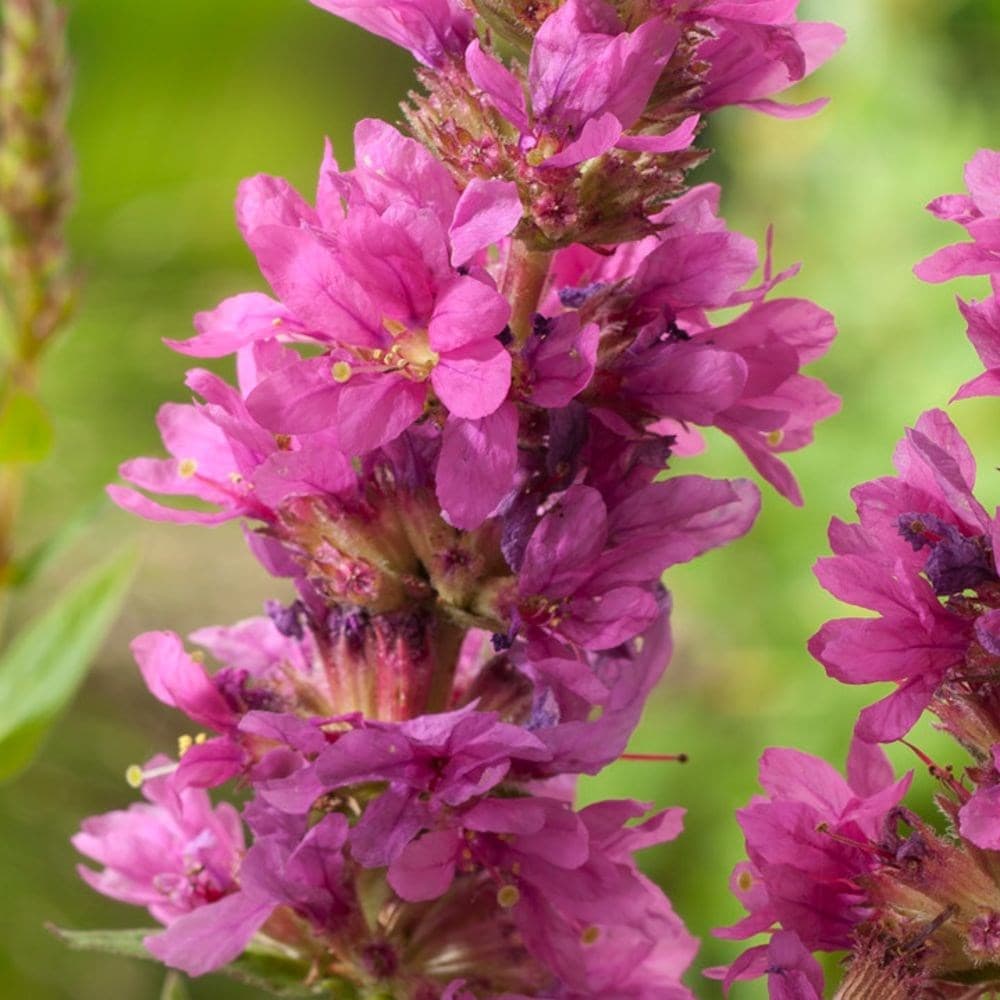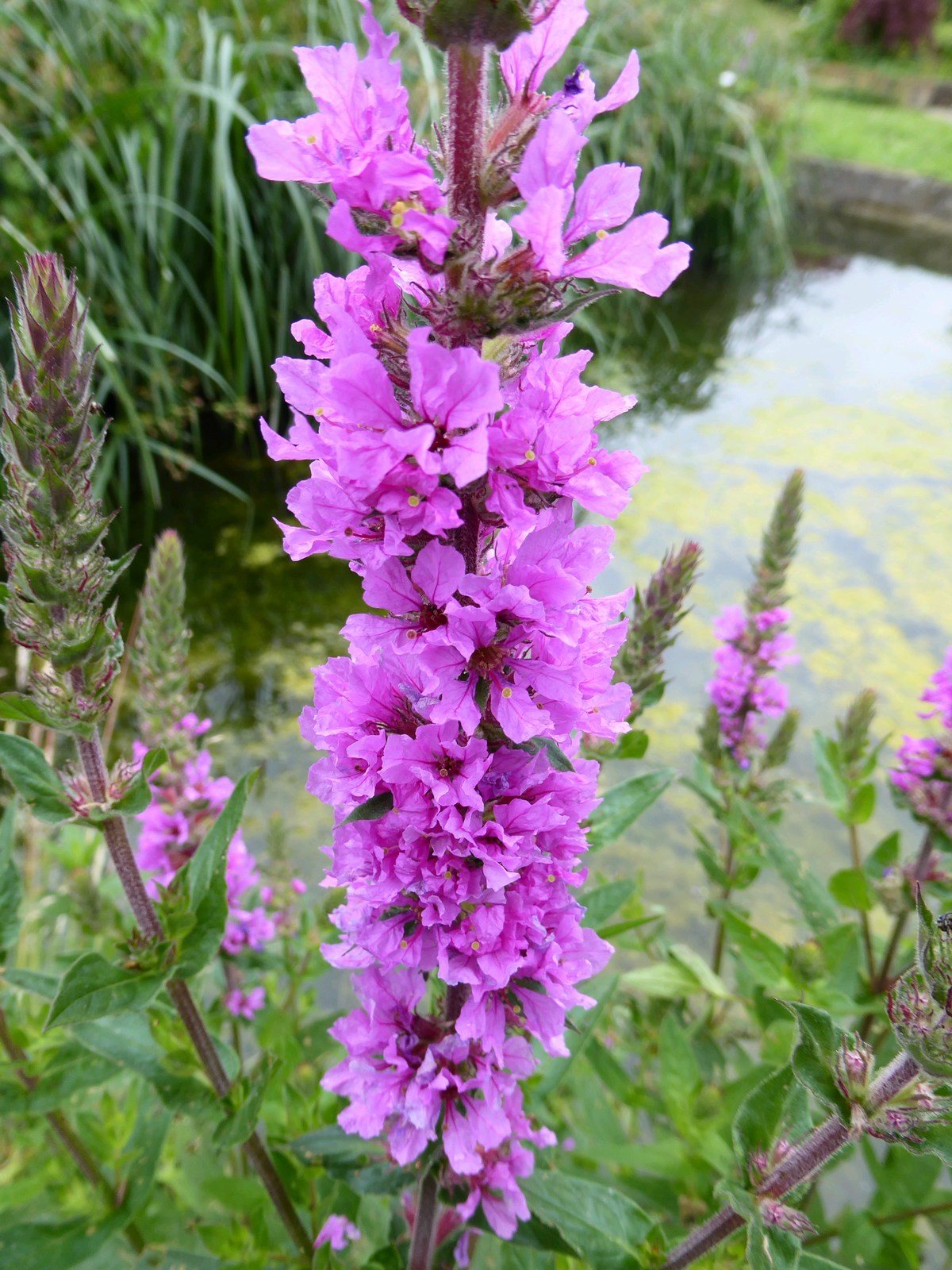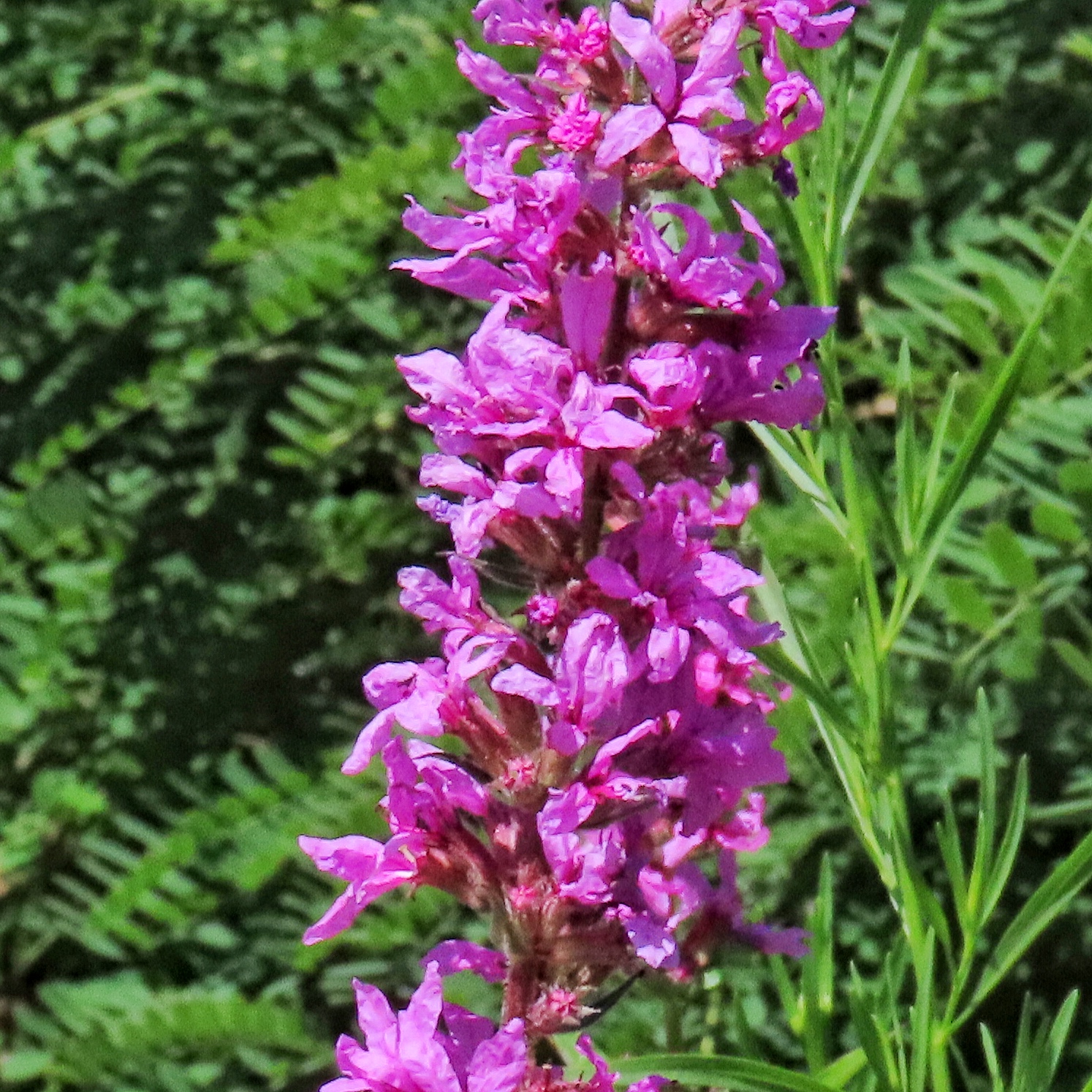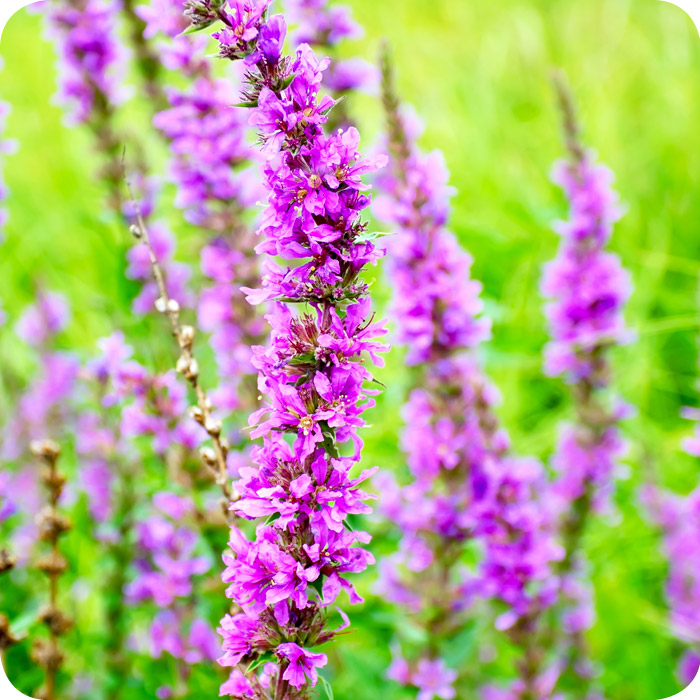Purple Loosestrife (Lythrum salicaria) Purple Loosestrife, Whorl, Downy, Small Leaf, Wetland

Purple loosestrife is an erect perennial herb that usually grows two to six feet tall. A mature plant can develop into a large clump of stems up to five feet in diameter. Each stem is four- to six-sided. The root system consists of a very thick and hard taproot, and spreading lateral roots.
Buy purple loosestrife Lythrum salicaria Delivery by Waitrose Garden

A very aggressive invader of sunny wetlands, purple loosestrife displaces native species and reduces plant and animal diversity. Don't let the attractive persistent flowers fool you--this one is not an asset to New England. Habitat
FileLythrum salicaria, purple loosestrife 5.jpg

Purple loosestrife, Lythrum salicaria, is a tall-growing wildflower that grows naturally on banks of streams and around ponds. It has strong, upright stems, topped in summer with long, poker-like heads of bright purple-red flowers. Its flowers are extremely attractive to bees and butterflies.
Lythrum salicaria Purple loosestrife Artisan Aquatics

PURPLE LOOSESTRIFE (Lythrum salicaria) Photo credit: S. Kelly Kearns Wetland perennial, three to seven feet tall, with up to 50 stems topped with purple flower spikes. One prominent leader stems but many side branches often make the plant look bushy. Clipped plants grow back and cut stems readily re-root in the soil to produce new plants.
Purple Loosestrife (Lythrum salicaria) Stock Image C003/5600 Science Photo Library

Spectacular when in full bloom, Purple Loosestrife (Lythrum salicaria) is a vigorous, upright perennial enjoying an extremely long bloom season from early to late summer. It features pink, purple, or magenta flowers in dense spikes, up to 18 in. long (45 cm) held atop lance-shaped leaves.
Lythrum salicaria Purple Loosestrife Aquatic Plants from Mr Fothergill's Seeds and Plants

Description Purple loosestrife has evolved to tolerate the shorter growing season and colder weather of the central and northern parts of the provinces. Plants in northern regions are smaller and flower earlier than those in southern regions.
Buy purple loosestrife Lythrum salicaria

Lythrum salicaria, commonly called purple loosestrife, is a clump-forming wetland perennial that is native to Europe and Asia. It is believed to have been first introduced into the U.S. from seed contained in ships' ballast, and it became established in certain estuaries in the northeastern states by the early 1800s.
PlantFiles Pictures Purple Loosestrife (Lythrum salicaria) by Rarri

Purple loosestrife, Lythrum salicaria, is a tall-growing hardy herbaceous perennial, native to the the British Isles. It thrives in moist soil or in the shallow water at pond margins. Upright stems are clothed with slender light green leaves and topped with long spires made up of numerous rosy-mauve flowers through summer.
Lythrum salicaria (Purple Loosestrife) Minnesota Wildflowers

COMMON NAMES: purple loosestrife TAXONOMY: The currently accepted scientific name of purple loosestrife is Lythrum salicaria L. (Lythraceae) [57,60,71]. Purple loosestrife will hybridize with European wand loosestrife (Lythrum virgatum) and winged loosestrife (Lythrum alatum) [3,92]. A number of different horticultural cultivars have been.
Lythrum salicaria (Purple Loosestrife) 10,000 Things of the Pacific Northwest

Flowers: Numerous, purple (also white or light pink) in color, terminal spike-like inflorescences in axillary clusters of two to several, 5-7 petals; bloom July through October. Fruit and seeds: Seed pod, small, prolific seed production.
Lythrum Salicaria Purple · Free photo on Pixabay

Lythrum salicaria or purple loosestrife [2] is a flowering plant belonging to the family Lythraceae. It should not be confused with other plants sharing the name loosestrife that are members of the family Primulaceae. Other names include spiked loosestrife and purple Lythrum.
Purple Loosestrife (lythrum Salicaria) Photograph by Bob Gibbons

Purple Loosestrife is one of several invasive species with biocontrols: 3 beetles that feed on leaves, flowers or root systems, all of which can impede seed production. The hope of biocontrols may be eradication, but the more realistic goal is to significantly reduce populations and subsequently reduce the impact on native wetland flora and fauna.
Purple Loosestrife (Lythrum salicaria) plug plants

Scientific Name Lythrum salicaria L. ( ITIS) Common Name Purple loosestrife, spiked loosestrife Native To Eurasia ( Munger 2002) Date of U.S. Introduction Exact date unknown; was established by the 1830s ( Munger 2002) Means of Introduction Through ships' ballast and as an ornamental ( Munger 2002) Impact Crowds out native species ( Munger 2002)
purple loosestrife (Lythrum salicaria)

Lythrum salicaria L. purple loosestrife. Invasive Information; This plant can be weedy or invasive according to the authoritative sources noted below. This plant may be known by one or more common names in different places, and some are listed above. Click on an acronym to view each weed list, or click here for a composite list of Weeds of the U.S.
PlantFiles Pictures Purple Loosestrife (Lythrum salicaria) by Equilibrium

Purple loosestrife is a perennial plant found rooted in a range of wet soil habitats. It can grow in a couple feet of water or on dry shore near the water line. It is commonly found in roadside ditches. Plants range from two to six feet tall, with several half to one foot long flower stalks on a single plant.
purple loosestrife (Lythrum salicaria)

Identification: Purple loosestrife is an erect perennial herb in the loosestrife family (Lythraceae) that develops a strong taproot, and may have up to 50 stems arising from its base. Its 50 stems are four-angled and glabrous to pubescent.